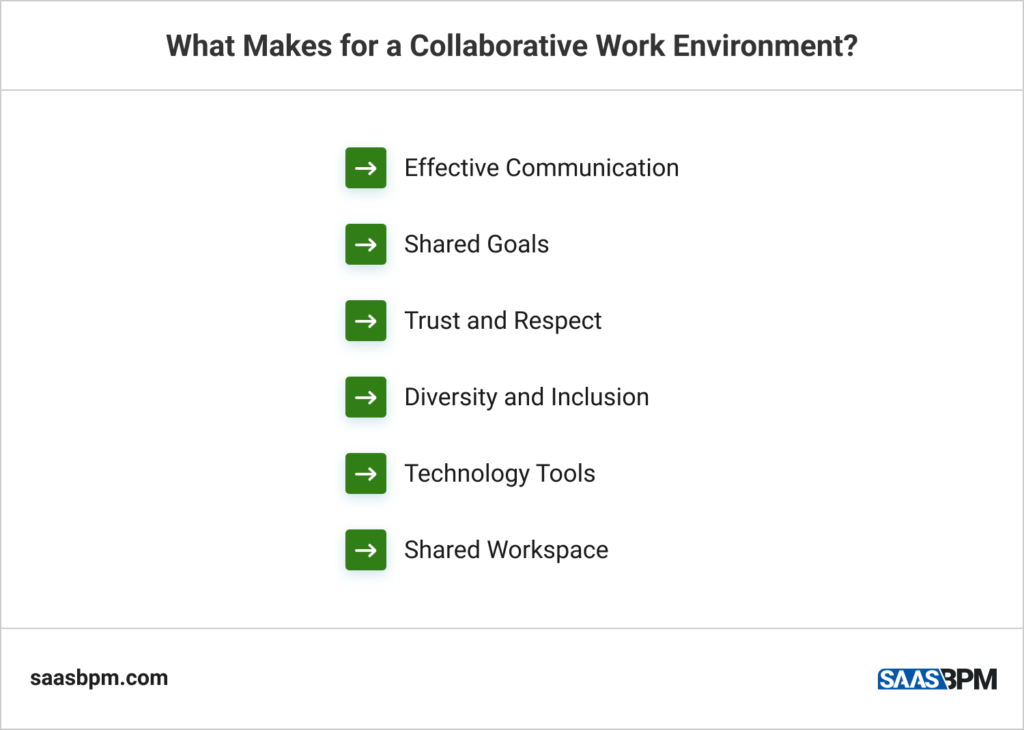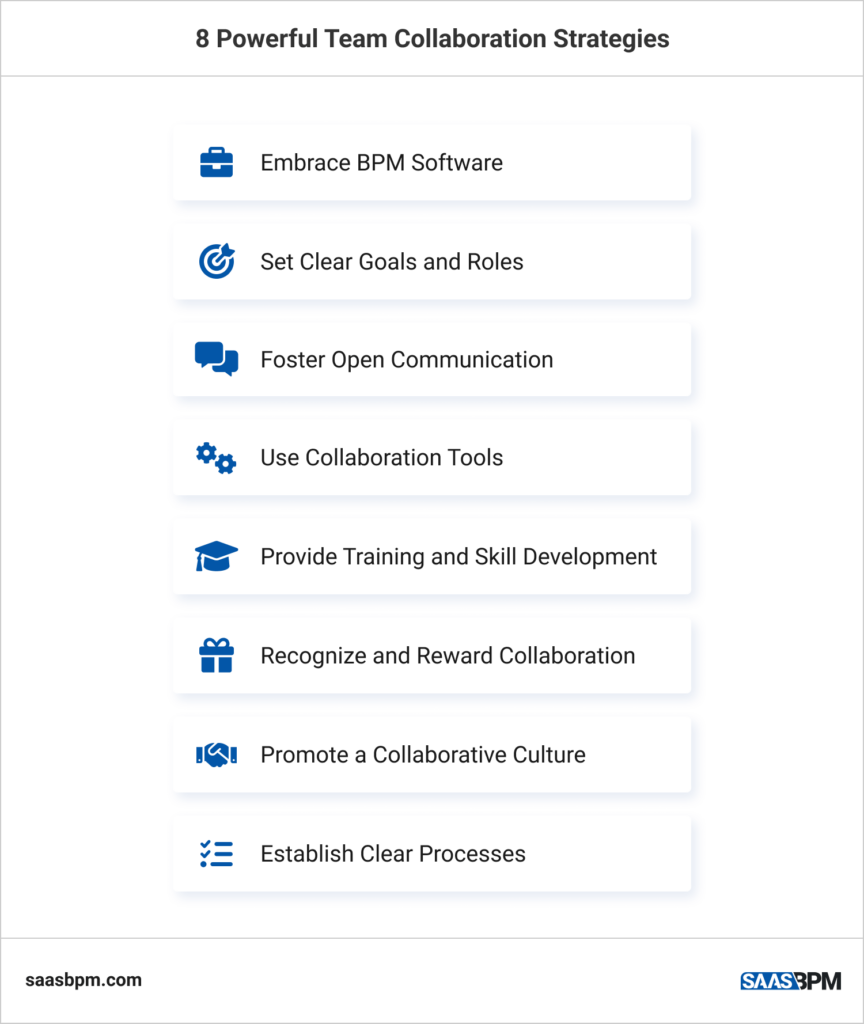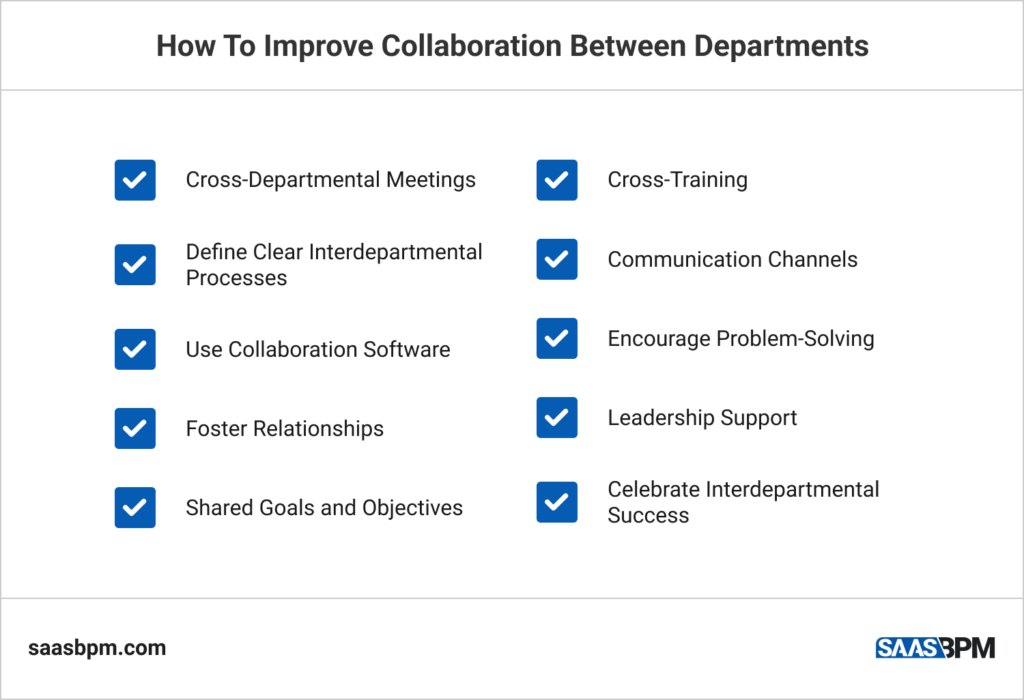In the fast-paced and interconnected world of modern business, team collaboration has emerged as a linchpin of success. Effective co-working doesn’t just happen; it’s a carefully orchestrated dance that requires seamless communication, shared goals, and the right tools to bring it all together. This is where business process management software such as SaaS BPM steps into the spotlight as a powerful catalyst for achieving collaboration excellence.
At the heart of successful collaboration lies a simple yet profound truth: precise communication is key. Without it, even the most talented teams can stumble. This is why BPM software, designed to streamline communication, automate tasks, and facilitate a shared workspace, has gained such prominence in the realm of team collaboration.
In this article, we will explore the vital elements that constitute a collaborative work environment. We’ll delve into a set of powerful strategies that can help you and your team not only communicate better but also work together more effectively to achieve common objectives. From the adoption of BPM software to the establishment of clear goals, we’ll cover a range of strategies that, when implemented, can transform your team into a well-oiled collaboration machine.
Let’s embark on this journey towards enhanced teamwork and productivity.
What Makes for a Collaborative Work Environment?

A collaborative work environment is a dynamic space where individuals come together to share ideas, knowledge, and efforts to achieve common goals. It’s a culture where team members actively cooperate, communicate, and contribute to produce outstanding results. But what are the key elements that make up such an environment?
1. Effective Communication
At the core of a collaborative work environment lies effective communication. This means open, honest, and transparent sharing of ideas, information, and feedback. When team members can express themselves without fear, they’re more likely to work together seamlessly. Communication tools and platforms, like email, instant messaging, and video conferencing, are vital for keeping the conversation flowing.
2. Shared Goals
Collaboration thrives when everyone understands and aligns with the common goals. When team members know what they’re collectively striving for, they can focus their energies and skills in the same direction. Clearly defined objectives create a sense of purpose and unity within the team.
3. Trust and Respect
Trust is the bedrock of collaboration. Team members must have confidence in each other’s abilities and trust that they will deliver on their commitments. Respect for each other’s ideas and opinions is equally important. When there’s mutual trust, it fosters open communication and productive cooperation.
4. Diversity and Inclusion
A diverse team can be a more innovative and creative team. Diversity in backgrounds, experiences, and skills can bring a variety of perspectives to the table, which can lead to fresh insights and solutions. Inclusion ensures that everyone’s voice is heard, regardless of their background or position.
5. Technology Tools
Modern technology plays a significant role in enabling collaboration. Tools like project management software, instant messaging apps, and video conferencing platforms provide the infrastructure for real-time communication, document sharing, and project tracking. Project management and workspace communication tools have become game-changers for fostering collaboration by automating workflows and streamlining communication.
6. Shared Workspace
A physical or virtual shared workspace provides a central hub for team members to come together, share documents, and work on projects. In a digital age, this is increasingly essential, allowing team members to access information and collaborate from anywhere, enhancing flexibility.
8 Powerful Team Collaboration Strategies

Effective team collaboration isn’t merely a workplace buzzword; it’s the lifeblood of a productive and innovative organization. Collaborative teams work together seamlessly, tap into the collective intelligence of their members, and achieve remarkable outcomes. But how can you foster this level of collaboration within your team? Let’s explore a set of powerful team collaboration strategies that can transform your group into a harmonious and high-performing unit.
1. Embrace BPM Software
One of the most impactful ways to boost team collaboration is through the adoption of a BPM solution. These tools serve as a centralized platform for managing, automating, and optimizing business processes. They enable teams to streamline workflows, automate repetitive tasks, and enhance communication. Here’s how BPM software can supercharge collaboration:
- Process Streamlining. BPM software allows teams to define and optimize their processes. By clearly outlining the steps and responsibilities within a workflow, teams can work more efficiently.
- Automation. Repetitive and manual tasks can be automated, reducing the risk of errors and freeing up team members to focus on more strategic and creative aspects of their work.
- Collaboration Hub. BPM software acts as a central hub for project management, document sharing, and task tracking. It provides a shared workspace where team members can access essential documents, track project progress, and collaborate in real-time.
- Communication. BPM software often includes communication tools like chat, email, and notifications, ensuring that team members can easily communicate and collaborate within the platform.
2. Set Clear Goals and Roles
To foster collaboration, it’s essential to define clear, measurable goals and assign roles within your team. Team members should have a complete understanding of the team’s objectives and their specific responsibilities. When everyone knows what they are working towards and their role in achieving it, collaboration becomes more purposeful.
Clear goals and roles also help in avoiding misunderstandings and conflicts. Teams can operate with a sense of direction, and members can see how their contributions fit into the bigger picture.
3. Foster Open Communication

Open and transparent communication is the lifeblood of collaboration. Encourage your team to communicate openly, share ideas, provide feedback, and voice concerns. Effective communication promotes trust, understanding, and a sense of inclusivity within the team.
4. Use Collaboration Tools
Collaboration tools have become an indispensable part of the modern digital workplace, enabling teams to work together efficiently and effectively. In fact, 60% of executives expect spending on such software to increase in future! Here are some of the key benefits of using these tools:
- Real-time communication, which facilitates efficient and effective discussions, data sharing, and problem-solving.
- Seamless file sharing across locations, which enhances teamwork efficiency and productivity.
- Task management through project management software, which increases accountability and transparency by clearly defining roles and responsibilities, and making progress visible to all team members.
5. Provide Training and Skill Development
To support your team’s growth and development, identify skill gaps through various assessments and create tailored training programs that fit their specific needs. Did you know that 78% of people are looking for a more supportive work environment? One-on-one mentoring and coaching can also help team members achieve their full potential. These initiatives can ignite a powerful transformation in your team, propelling them towards greater success and efficacy.
6. Recognize and Reward Collaboration
Fostering a culture of collaboration is key to success, and recognizing and rewarding these efforts is crucial. By acknowledging successful team collaborations, providing individual recognition for standout contributions, and encouraging peer recognition, you can create a workplace that values and encourages teamwork. This fosters a sense of ownership, accountability, and unity that will drive your team to new heights of success.
7. Promote a Collaborative Culture
Cultivating a culture of collaboration within your organization is essential.
First of all, practice what you preach! Team leaders should embody collaborative behavior, setting a positive example for others to follow. A “lead by doing” approach fosters a culture of collaboration, making it part of the organizational DNA.
Also, promoting collaboration at all levels is key. Breaking down silos and encouraging cross-functional teamwork helps create a sense of unity and shared purpose.
In addition, make sure you celebrate collaborative achievements to build a positive feedback loop. When teams see that their efforts are recognized and rewarded, they’re more likely to continue collaborating. A culture of recognition can reinforce the value of teamwork and lead to long-term success.
8. Establish Clear Processes
Documenting processes provides team members with a clear and accessible reference point, reducing confusion and disagreements. Also, standardizing procedures ensures that team members are working from the same playbook, leading to a more cohesive and efficient team dynamic. Finally, clear and well-defined processes promote predictability, enabling team members to approach tasks with confidence and producing consistent results.
How To Improve Collaboration Between Departments

Collaboration within a team is essential. However, it’s equally important to foster it between different departments within an organization. Effective cross-departmental collaboration can break down silos, improve communication, and lead to more innovative solutions. Here’s how you can enhance collaboration between departments:
Cross-Departmental Meetings
Organize regular cross-departmental meetings where representatives from various departments come together to discuss shared goals, challenges, and initiatives. These meetings provide an opportunity to exchange information, align strategies, and create a sense of unity across the organization.
Define Clear Interdepartmental Processes
Establish clear processes and workflows for interdepartmental collaboration. When departments understand their roles and responsibilities in joint projects or initiatives, it minimizes confusion and overlaps. Document these processes to ensure everyone is on the same page.
Use Collaboration Software
Implement collaboration software that allows different departments to share information and work together on projects. Such tools centralize communication, document sharing, and project management, making it easier for teams from various departments to collaborate effectively.
Foster Relationships
Encourage team members from different departments to build relationships and get to know each other. Social events, cross-departmental projects, or even simply encouraging employees to interact with colleagues from other departments can help break down barriers and improve communication.
Shared Goals and Objectives
Ensure that all departments are aligned with the organization’s overarching goals and objectives. As a matter of fact, 92% of American workers would work harder if their colleagues could see their goals. Also, 4 out of 10 employees fail to understand how their work contributes to the shared company goals. When every department understands how their work contributes to the company’s success, it becomes easier to coordinate efforts and foster collaboration.
Cross-Training
Consider implementing cross-training programs where employees from one department spend time in another department to learn about their roles and challenges. This not only enhances their skills but also builds empathy and understanding between teams.
Communication Channels
Establish clear and efficient communication channels between departments. Whether through regular meetings, interdepartmental newsletters, or a dedicated collaboration platform, having a structured way to exchange information can significantly improve collaboration.
Encourage Problem-Solving
Encourage cross-departmental problem-solving sessions. When different perspectives and expertise come together to address challenges, it often leads to innovative solutions that benefit the entire organization.
Leadership Support
Leadership plays a crucial role in fostering interdepartmental collaboration. Senior management should actively promote and support cross-departmental initiatives and communicate the importance of working together as a unified organization.
Celebrate Interdepartmental Success
Recognize and celebrate successful cross-departmental collaborations. Highlighting these achievements reinforces the value of working together and can motivate departments to continue collaborating effectively.
Wrapping Up
Effective team collaboration is the cornerstone of a thriving organization. It’s the synergy of individuals working together seamlessly, sharing knowledge, and achieving common goals. To promote collaboration, consider adopting BPM software, setting clear goals, and fostering open communication.

